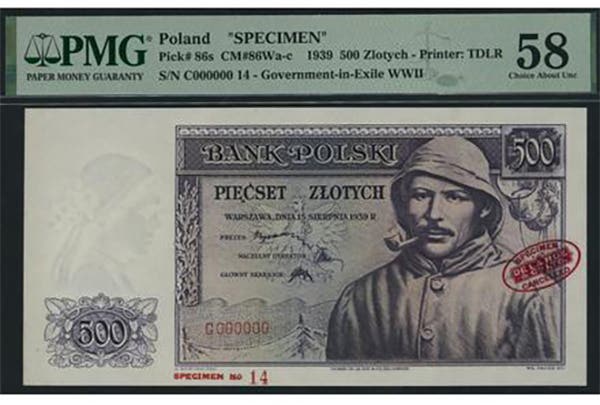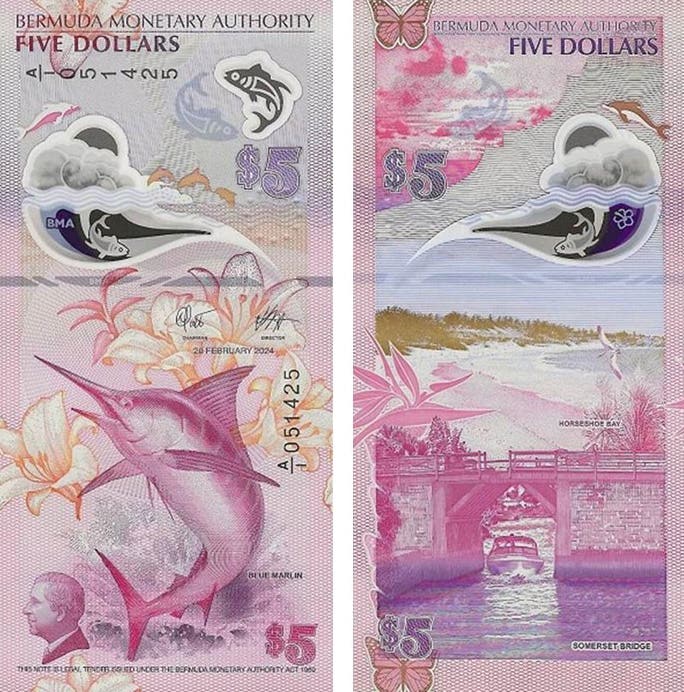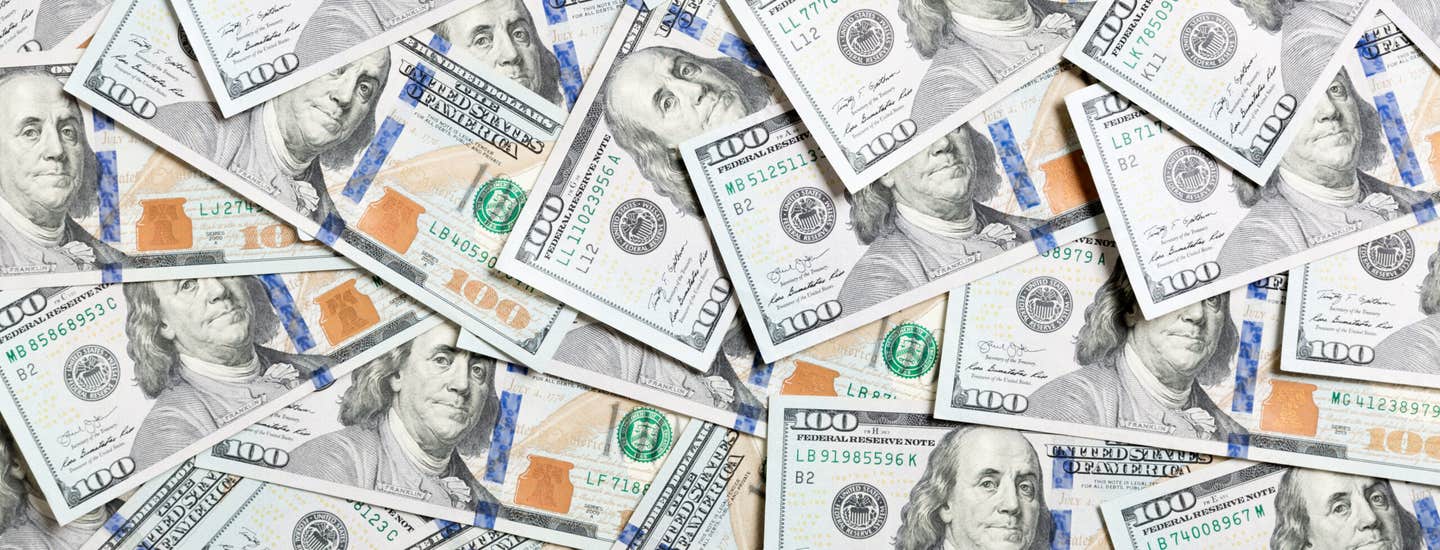Territorial Discovery of the Decade
Drink in this extraordinary find. Yes, it is a 1902 red seal from Hawaii—the first ever reported from that territory. Arrival of this Kahului note in Andrew Shiva’s collection represents…
Drink in this extraordinary find. Yes, it is a 1902 red seal from Hawaii—the first ever reported from that territory. Arrival of this Kahului note in Andrew Shiva’s collection represents the last piece in the puzzle required for someone to assemble a complete red seal collection from every territory and state.
Not only that, it is the last remaining territorial type to appear. There is now at least one Original/1875, 1882 brown back, 1882 date back, 1882 value back, 1902 red seal, 1902 date back and 1902 blue seal plain back from every territory in which those types were issued.
A 1902 red seal territorial has been the most anticipated territorial discovery since an 1882 Territory of Alaska brown back arrived a decade ago.
Only two of the four banks from Hawaii that issued notes utilized red seals, The First National Bank of Lahaina and The Baldwin National of Kahului. Both dribbled them out in small numbers.
Soak up the appearance of this wonderful jewel. It earned its stripes as a piece of currency by circulating, but miraculously it didn’t sustain any damage along the way.
• The note exhibits even circulation without blemishes of any type on either side.
• The penned bank signatures are absolutely spectacular, perfectly formed, legible and as bold as the day they were applied.
• The note is well centered.
• The colors—the red seal, the blue serial numbers, the intaglio face and back inks—are vivid.
Those of us with our fingers on the pulse of nationals despaired that any red seals had survived from Hawaii. After all, it has been over a hundred years since they were current. Their age coupled with small numbers spoke of high risk.
The Kahului bank had a circulation of only $13,000 during the red seal era and the Lahaina bank had $6,250. To support those meager circulations, only 3,396 $5, $10 and $20 red seals were issued through the Kahului bank and 960 $10s and $20s from Lahaina. These totals include worn notes that were replaced from circulation, so at any one time there were far fewer of them out there in people’s pockets than these totals suggest.
There were two red seal printings for the Kahului bank. Sheets 5-5-5-5 1-315 and 10-10-10-20 1-264 were delivered to the Comptroller’s office June 4 & 5, 1906. These were followed by 5-5-5-5 sheets 316-465 and 10-10-10-20 265-384 on June 23, 1908.
The first shipment to the bank occurred as soon as the Comptroller’s office received the notes from the Bureau of Engraving and Printing. A later shipment left Washington, D.C. to the bank on Dec. 17, 1908 consisting solely of 30 sheets of $5 bearing serials 376-405. That shipment contained the discovery note. It probably took weeks for it to arrive at the bank.
The signers of the note were president Henry Perrine Baldwin and cashier David Colville Lindsay. Baldwin’s father Dwight was a missionary and physician from New England who arrived in Hawaii in 1831. As with a number of missionary sons, Henry Baldwin found economic opportunity and built a huge sugar plantation-based fortune with a business partner named Samuel Alexander. That business ultimately blossomed into a diversified Hawaiian corporation. Cashier Lindsay was a prominent employee in their enterprise.
By the time Hawaii was annexed to the United States as a Territory in 1898, five of these enterprises dominated the Hawaiian economy. They were called The Big Five. Alexander & Baldwin was one of them.
Baldwin suffered the worst day of his life on March 28, 1876. He was adjusting rollers in the cane grinder at the Paliuli Mill when his right hand became entangled in the mechanism, pulling in his arm. A worker stopped the machine before it killed him and reversed the rollers. Another was sent 10 miles to fetch the nearest physician to amputate what was left of his arm. Figure 4 illustrates that he learned to write with his left hand.
Banking on Maui & The Baldwin National Bank
Organizers had two choices when incorporating a bank in the Territory of Hawaii: organize under territorial banking law or under U.S. national banking law. Territorial banking law was far less restrictive so those banks could loan on real estate and could have branches.
In contrast, national banks were designed to be commercial banks that made short term loans to businesses and industries except for real estate. Branching was not allowed at the time and oversight was far more rigorous.
Hawaii territorial banking law required banks to have a minimum capital of $200,000, whereas the minimum capital requirement for a national bank after passage of the Gold Standard Act of March 14, 1900 was only $25,000 for banks in towns of 3,000 or less, and more for towns with larger populations. National banks were considered safer, but the ability to loan on land could be more profitable for a bank operating under territorial law. Only national banks could serve as fiscal agents for the U.S. Government.
The organic act establishing the Territory of Hawaii was passed by Congress and signed into law by President McKinley on June 11, 1900. Syndicates of investors had been petitioning the Comptroller of the Currency to reserve titles for proposed banks there since the overthrow of the Hawaiian monarchy in 1893, especially in Honolulu. The First National Bank of Hawaii at Honolulu was chartered Oct. 17, 1901 with a capital of $500,000. It flourished over the decades and joined the ranks of the top tier banks in the nation.
However, the First National of Honolulu had major competition from The Bank of Hawaii, which had been organized in 1893 by Charles M. Cooke following dissolution of the monarchy. His bank obtained a charter in 1897 from the Republic of Hawaii. Cooke seriously eyed Maui’s developing sugar economy as fertile ground. In league with First National’s president Cecil Brown and H. P. Baldwin, they sent Charles D. Lufkin, a teller from First National, over to Maui to begin to organize a chain of national banks. The idea was to take advantage of the low capitalization requirement for such banks and to keep the Maui business separated on paper from the Oahu business. The banks Lufkin organized in order of dates of charter were The First National Banks of Waluku (Oct. 17, 1901), Lahaina (Feb. 19, 1906), and Paia (Sept. 26, 1913).
Cooke served as president and Lufkin as cashier in them except briefly for Waluku where W. J. Lowrie, a board member, served as president during its first year. Lowrie left to manage a sugar plantation in Puerto Rico so Cooke took over as president and David Lindsay, the Alexander & Baldwin plantation manager, filled Lowrie’s vacated directorship.
On paper the three national banks were standalone institutions, but, in the classic chain banking style of the times, they had interlocking ownership and directors.
Cooke resigned his presidencies in the three banks and limited himself to the presidency in The Bank of Hawaii at Honolulu. This move complied with Section 8 of the Clayton Antitrust Act of 1914 prohibiting interlocking directorates in national banks that went into effect in 1916. Next, the three banks were liquidated May 1, 1917 in order to be reorganized under a territorial charter as the Bank of Maui. Its main office was at Waluku; the others became branches. Being a territorial chartered bank, Cooke assumed the presidency and all was well. The best part was that the Bank of Maui could make loans on land and even seed new branches.
Henry P. Baldwin, of course, could use a bank of his own so now that Lindsey knew something of the banking business, Baldwin had him resign his directorship in The First National Bank of Waluku in the fall of 1905 so he could organize The Baldwin National Bank in Kahului. The Kahului bank was chartered May 5, 1906 as the third national bank on Maui.
Baldwin installed his eldest son Henry Alexander Baldwin as its first president for the first year or so, then Henry P. took over until his death in 1911. Henry A. reassumed the presidency thereafter. Lindsay served as cashier, which was the operating manager position, for the entire life of the bank.
After observing the more rapid growth of the Bank of Maui, Henry A. Baldwin and the other directors of the bank decided to jettison its restrictive national charter and reorganize as Baldwin Bank, Ltd., on January 3, 1921. H. A. Baldwin and D. C. Lindsay retained their roles in the new entity.
One thing about the second-generation missionary children was that in sugar, pineapples, transportation, banking, whatever, the concept of conflict of interest was unknown. Through interlocking ownerships and directorships, some became oligarchs whose influence spread well beyond Hawaii. Their legacy was encapsulated as “The missionaries came to Hawaii to do good; their sons did well.”
Sources
Book: Jeremy Uota, 2016, Hawaii national bank notes: Stuffcyclopedia, Kaneohe, HI, 261 p. is the must-read authority on Hawaiian national bank notes and bank histories, available from stuffcyclopedia@gmail.com.








